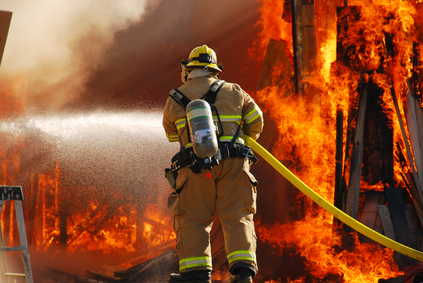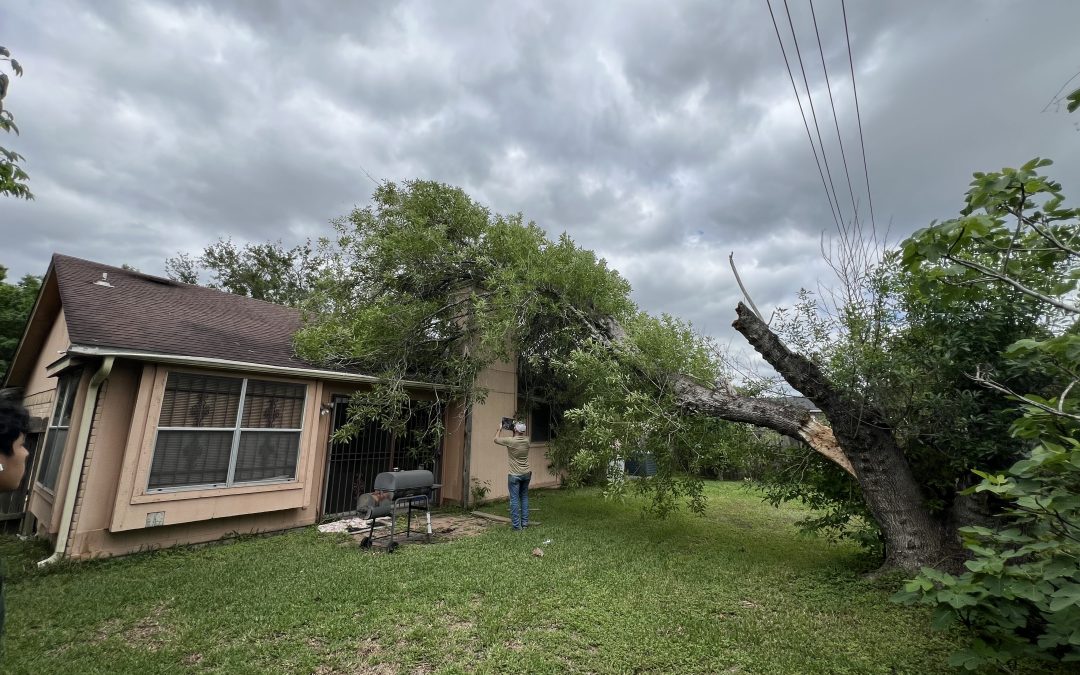
Although you are in a hurry to clean your home after a fire, contacting a professional for advice will maximize your time and reduce further damage. Call a full-service property restoration company immediately once the fire is out. Qualified restorers can provide hints to help determine which items can (or cannot) be refurbished, access professional grade tools and provide instant hands to help. Total Restoration partners with you to recover quickly, and some insurance policies will cover costs for thoroughly cleaning and deodorizing your home.
Preventing Further Deterioration
After the blaze, the water used to fight the fire (and the increased traffic) can damage any valuables left in the home. As soon as you get permission from the fire marshal to safely re-enter your home, help the professionals by:
- Open windows and doors to ventilate areas.
- Get the air moving BUT turn off the A/C or heater to limit the damage by corrosive particulates.
- Position two fans across the room from each other to best circulate air.
Start from the Bottom — Caring for Floors
Professionals know that time is an enemy of water damaged floors. Priority is to remove wet items from floors as soon as possible, including rugs. Allow them to dry, elevated, in the garage or another safe place.
- After carefully inspecting carpet; removal of the wall-to-wall is sometimes necessary to prevent future mold and mildew on underlying structures.
- Ceramic and other hard tile floors will fare best.
- Type of wood, pre-fire condition and the amount of damage will determine prospects of saving your wood floors.
We suggest professionally cleaning the carpets twice: once before cleanup workers enter (in order to minimize tracking soot around) and once again after the remediation team is finished. Place aluminum foil or plastic food wrap under furniture legs as metal in the furniture could lead to rust on the floors.
Removing Soot from Household Textiles
Soot is oily will stain other household fabrics. For this reason, you must remove it before you attempt to clean or deodorize items. Hire a licensed restorer; one of their first steps use a professional grade vacuum. However, do not use your home vacuum attachments or an upright vacuum because the brushes tend to force the residue into fabrics.
Eliminating Odors
The smoke odor may remain in upholstered furniture and draperies unless they are properly deodorized. Experienced restorers can suggest counteractants: chemicals or additives that break up smoke molecules and eliminate odors at the cellular level. The exact recommendation will vary with the type of material burned in the fire and the fabrics affected.Fire restorers also sometimes use an ozone treatment to break up molecules and eliminate odors. Keep in mind that most household deodorizing sprays and disinfectants provide only temporary relief. In reality, some sprays may interact with smoky odors and create a more offensive odor.
Protecting Your HVAC
During a fire, smoke can permeate walls and other surfaces and drift through household ducts, where it becomes trapped. If not properly removed, smoke odor reoccurs from time to time, especially during warm or damp weather and when the HVAC system restarts. Restorers can remove these particles from ducts. They may use a chemical sealer to secure smoke permanently to the sides of ducts since these areas may be difficult to clean with conventional vacuum-and-brush methods. Thermal fogging uses a chemical fog to penetrates your home and walls just as the fire did, neutralizing the smoke odor as it goes.
Cleaning Furnishings
You must work quickly and steadily, smoke can etch brass or copper in as little as 24 hours. A full-service restorer like Total Restoration will be able to inspect each piece of furniture and help you determine the best course of action. Do not attempt to wash or dust fire damaged wood surfaces; chances are that your cleaning tools will scratch the surface and ruin the piece.
Cleaning Soot Stains from Walls
Total Restoration uses many techniques such as chemical sponges with non-water-based cleaner to clean soot from walls. Because of toxicity and fumes, they will adhere to high safety standards such as wearing rubber gloves, ventilators and maximizing ventilation while working. Don’t attempt DIY solutions like paint thinners or rubbing alcohol. Professionals will be able to determine which products will be successful with your wall finishes.
Skilled Services to Help Your Home Get Back
Comprehensive fire damage recovery services include removing soot, making structural repairs, and protecting your personal belongings. Many fire accidents are also accompanied by water losses due to firefighting efforts, and teams can also provide water damage cleanup, drying, and remediation services.



![5 Fire Damage Restoration Facts [Infographic]](https://totalrestoration.com/site/wp-content/uploads/2024/06/shutterstock_2373252419.jpg)